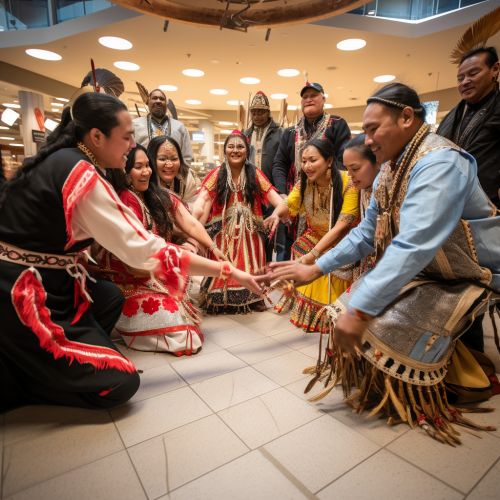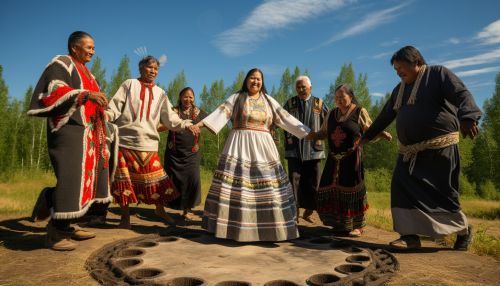Round dance
Overview
Round dance is a term with several distinct meanings, depending on the era and regional context in which it is used. In its most universal interpretation, a round dance involves a group of dancers moving in a circular or curved formation, typically with a rhythmic pattern. The dance can be performed with a variety of steps and movements, which can vary greatly depending on the specific style or tradition of the round dance.


Historical Context
Round dances have been a part of human culture for thousands of years. They are found in many different societies around the world, from the ancient civilizations of the Middle East and Europe, to the indigenous cultures of the Americas and Oceania. Round dances are often associated with community gatherings, celebrations, and rituals, and they can serve a variety of social and spiritual functions.
Types of Round Dance
There are many different types of round dance, each with its own unique characteristics and traditions. Some of the most well-known types include:
Contra Dance
Contra dance is a form of round dance that originated in New England in the 17th century. It is characterized by long lines of couples who perform a series of steps and figures to the music.
Circle Dance
Circle dance, or ring dance, is a style of dance where participants dance in a circle, holding hands or linking arms. It is a common form of dance in many cultures, and it is often used in social and ceremonial contexts.
Square Dance
Square dance is a type of round dance that is typically performed by four couples in a square formation. It originated in 19th century America and is often associated with rural and western cultures.
Folk Dance
Many traditional folk dances from around the world are performed in a round formation. These dances often reflect the cultural and historical traditions of a specific region or community.
Cultural Significance
Round dances hold significant cultural importance in many societies. They often serve as a means of social interaction, allowing individuals to come together and participate in a shared activity. In many cultures, round dances are also used as a form of storytelling, with the movements and patterns of the dance serving to convey a narrative or express a cultural or spiritual concept.
In addition to their social and cultural functions, round dances can also have a spiritual or religious significance. For example, in many indigenous cultures, round dances are used as part of ceremonial rituals, often serving as a means of connecting with the spiritual world or honoring ancestral spirits.
Modern Round Dance
In the modern era, round dance has evolved to incorporate elements of ballroom dance and other forms of social dance. This style of round dance, sometimes referred to as "choreographed ballroom," involves couples dancing in a circular pattern around the dance floor, performing a sequence of steps that is choreographed to a specific piece of music. Modern round dance includes a variety of dance styles, such as waltz, foxtrot, tango, and more.
